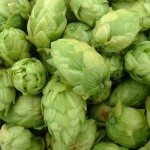How to Taste Beer
Tasting Beer isn’t what it used to be. It can be just as serious of an exercise as tasting Wine or Spirits. As always you should learn to taste Beer to heighten your understanding of the various aromatic and flavor profiles to b etter know what you like and to be articulate what you like. Tasting Beer should never interfere with your enjoyment of drinking Beer – NEVER!
etter know what you like and to be articulate what you like. Tasting Beer should never interfere with your enjoyment of drinking Beer – NEVER!
When tasting, observation is king. All of your senses are employed.
The Pour – With Beer it has to start with a proper pour. Pouring a Beer will aerate the beer and the cascading and churning affect created in the bottom of the glass contributes to the Beer’s texture.
Start with the glass held at a 45 degree angle and aim the pour at the glass’ side, not the bottom. As you near the half way point start to raise the glass to an upright position while continuing to pour. Practice make perfect so if this seems difficult at first it will become second nature before long.
Appearanc e – Now give it a look. What’s the color? Is it clear or cloudy? What about the head – is it thick like creamy or foamy and laced? Unlike most Wine and Spirits color doesn’t always tell you what to expect from your Beer. A black beer could be sweet, dry, fruity, or hoppy.
e – Now give it a look. What’s the color? Is it clear or cloudy? What about the head – is it thick like creamy or foamy and laced? Unlike most Wine and Spirits color doesn’t always tell you what to expect from your Beer. A black beer could be sweet, dry, fruity, or hoppy.
Aromatics – Now it’s time to get your olfactory involved. Most of what we consider to be “taste” actually happens in the aromatics via the olfactory. It’s important to agitate or swirl the beer a bit to get some Beer splashed up on the sides that can quickly and easy evaporate sending vapors of precious Beer to your nose. Take a mental note of what you are perceiving. Is it malty (malted barley), hoppy, fruity, or are there notes of citrus, or coffee, or anything else that you can imagine? What you are smelling should be confirmed by what you will be tasting on your palate.
Flavors – Does the flavor confirm the aromatics? Is it spot on or have one of the attributes discovered while nosing taken the lead position. Is it sweet or dry? Is a generous portion of acid present revealing itself by activating your salivary glands? This is all part of the process. How about the texture? Is it rich and creamy or is it dry and vibrant being more refreshing than mouth-filling.
Make at least mental notes if not physical notes to act as a reference to other Beers you have or will encounter. This is vital and will serve you well as you seek new Beers and catalog past brews that have won your affections.
The consideration of Style
Style typicity is not just over-rated it’s practically non-existent. Use the reference of styles as a point of reference but not much else. We have provided a look at 20 major Beer styles here at BevX.



